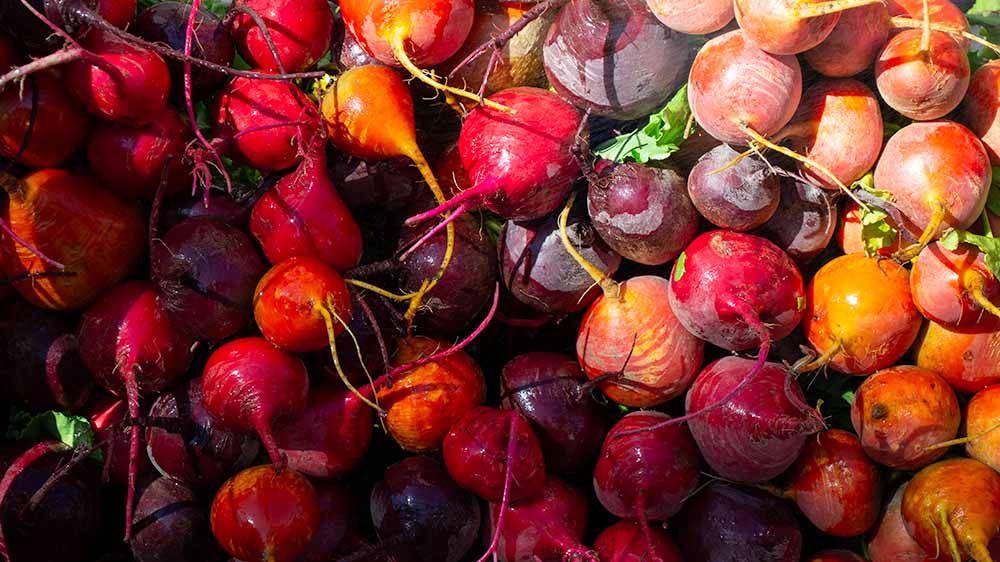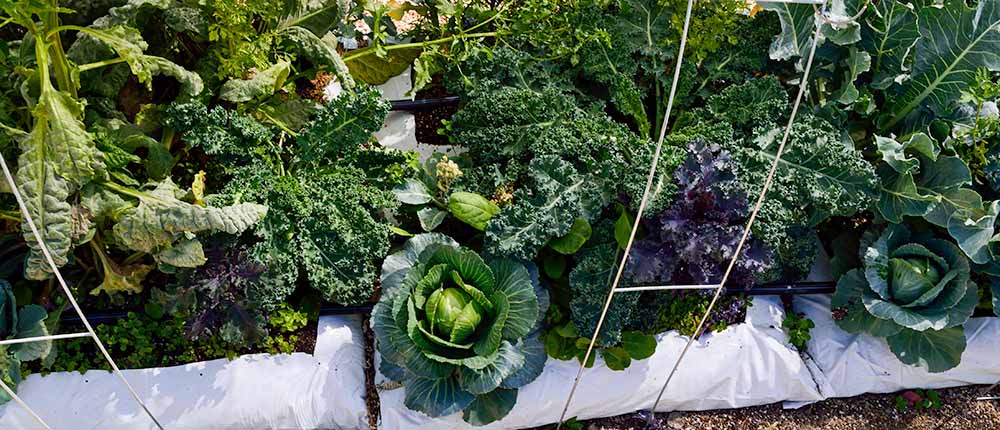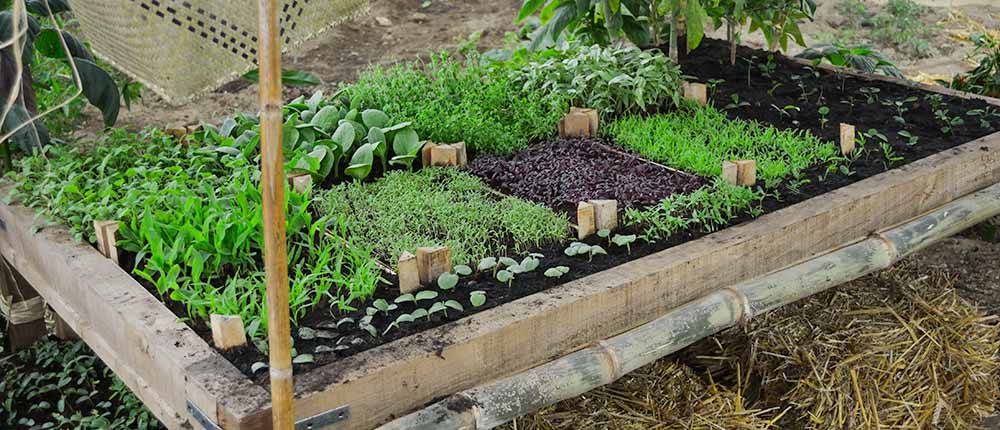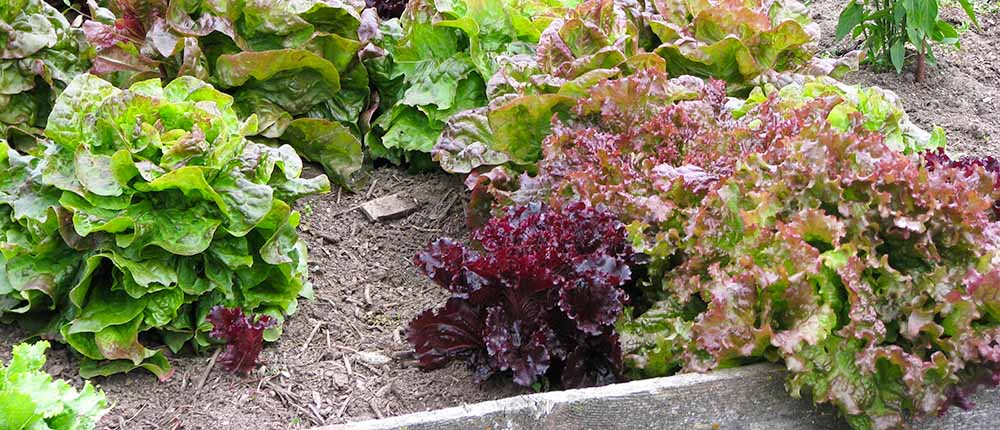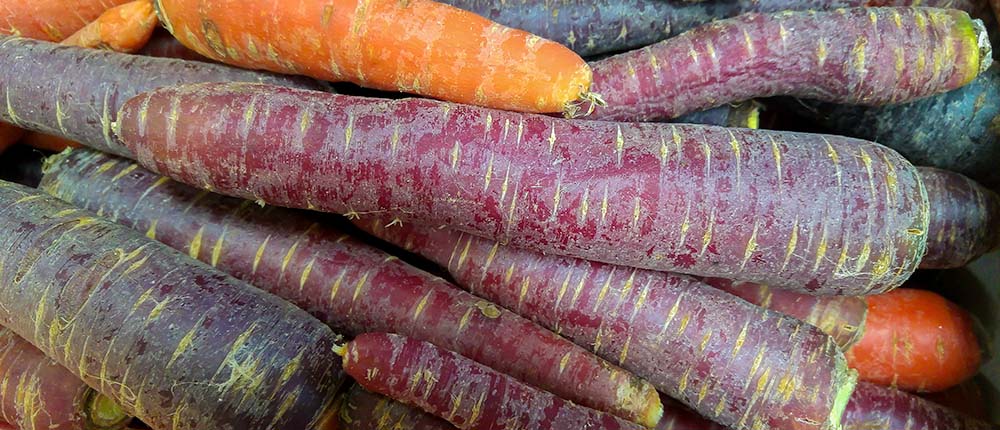Why Grow a Cool Season Garden
The Joy of Fall Gardening
Ever wish your garden could last longer than just the summer? Or wonder why most gardens are dormant in fall and hibernating until next spring?
Cool-season gardening, also known as fall and winter gardening, is full of flavors and benefits that’ll leave you wondering why you waited so long to try it, whether you’re a seasoned pro or just getting started. It’s time to discover the joy of growing food when the rest of the gardening world is slowing down.
If you thought gardening was just for sunshine and sandals, think again!
Cooler temperatures bring unique opportunities, opening the door to a whole new world of delicious crops like kale, carrots, and broccoli like you’ve never tasted. Fall and winter gardening offers a refreshing change of pace, often easier with fewer pest and disease challenges than during the scorching summer heat.
Whether you’ve got a sprawling backyard or a few pots on your patio, there’s a cool-season crop out there waiting for you. Let’s look at the surprising reasons why you should join the cool-season crew and discover the joy of growing food in fall and winter.
Cool season bag garden with brassicas
Taste & Nutrition
Wake up Your Tastebuds with Cool-Season Vegetables
Fall’s first touch of frost works wonders on the flavor of your vegetables, giving carrots an extra burst of sweetness, surprisingly tender kale with a nutty taste, and deeply flavorful Brussels sprouts instead of the bland offerings in the store. A whole new level of flavors and choices awaits you in cooler weather.
We’ve become accustomed to salads in the summer, but lettuce is a cool-season crop. As the weather cools, it becomes sweeter and more flavorful when not struggling with hot weather. Depending on where you live, you can harvest leafy greens, root vegetables, and more into fall and even winter. That means fresh from the garden crunch and taste in your stir-fries, soups, and salads long after other plants are done.
Fall and winter gardening gives you vegetables you won’t find at the grocery store, like Romanesco broccoli with its intricate fractal patterns, kohlrabi with its spaceship-like appearance and surprisingly sweet taste, or the delightful crunch of fresh fall peas. Expand your menu and impress your family and friends with these unexpected gems.
We’ve compiled this quick checklist to help you see the abundance that can be grown before and after the traditional Summer garden. Cool Season Vegetables to Love has the details!
Intensively planted cool season garden
Practical Benefits
Beat the Heat, Maximize Space, and Grow Anywhere
Cool-season gardening offers a welcome relief from the heat. Gardening in crisp, comfortable weather is much better than wilting under the sun. Plus, if you live in a region with increasingly hot summers, those delicate greens and herbs that struggle in July usually thrive in the cooler fall temperatures.
It’s not just about beating the heat – it’s also about making the most of your garden space. Think of it as a relay race for your garden beds, extending your harvest and keeping those beds productive for longer. Once your summer crops have had their moment in the sun, it’s time to pass the baton to the cool-season crew. This “succession planting” strategy means you’ll be enjoying fresh, tasty harvests from spring through fall.
If you don’t have a sprawling backyard, that’s no problem! Many cool-season crops grow perfectly well in pots, planters, or raised beds, making them ideal for patios, balconies, or even small urban gardens. And if you’re really tight on space, consider growing vertically. Some cool-season veggies, like peas and beans, love to climb, leaving more room for other tasty vegetables.
Remember the little helpers that call your garden home. Planting cool-season flowers and cover crops provides a haven and crucial food source for beneficial insects and pollinators during the cooler months, which overwinter in the garden and help control pests come spring.
Different types of lettuce in a cool season garden
Reasons Why
Fall is the Coolest Time to Grow
Cool-season planting is a fantastic way to get your toes wet if you’re new to gardening. Cooler temperatures are more forgiving for tender seeds and seedlings, and pests and weeds of summer gardens won’t challenge them. Think of it as a gentle introduction to the joys of growing your own food!
For seasoned gardeners, the cool season is like a playground for experimentation. It’s the perfect opportunity to try out new, unique vegetables and challenge yourself with season-extending techniques like cold frames and row covers. Who knows what delectable discoveries you’ll find?
For families, cool-season gardening is a wonderful way to create lasting memories. Kids are amazed by the magic of planting seeds and watching them sprout into delicious vegetables, even as the weather cools down. It’s a hands-on learning experience that teaches them where their food comes from and instills a love for nature.
The practical benefits extend beyond fresh produce and family fun. Tending to a garden during the shorter days of fall and winter can be a natural mood booster. It provides a sense of purpose, accomplishment, and connection to the natural world – all while soaking up the sun and breathing fresh air. Consider it “gardening therapy” to combat those winter blues!
The sheer beauty of a cool-season garden is something to remember. The vibrant, unique textures and the sculptural shapes of kale and cabbage add an unexpected touch of magic to your fall and winter landscape. It’s a feast for the eyes and the soul.
Carrots from a cool season garden
Climate-Specific Perspectives
Cool-Season Gardening Tips for Any Climate
Cool-season gardening isn’t a one-size-fits-all approach. Mother Nature always throws a few curveballs depending on where you live. Let’s look at how your climate plays a major role in your cool-season gardening success, from scorching summers to chilly winters and everything in between. Understanding your unique climate will help you choose the right plants, plan your timing, and make the most of your garden space, no matter the weather.
Important Considerations for Every Garden:
- Microclimates: Small areas can have slightly different temperature and sunlight conditions, even within a specific climate zone. Take advantage of these to extend your growing season or protect more delicate plants.
- Elevation: Higher elevations tend to have cooler temperatures, even within hot or moderate climates. This can create opportunities for growing cool-season crops in unexpected places.
- Sunlight Hours: The length of daylight hours is a crucial factor for plant growth. Consider this when choosing varieties and planning your garden layout.
- Rainfall: The amount and distribution of rainfall can vary greatly between climates. Adjust your watering schedule accordingly and consider utilizing rain barrels or other water-saving techniques.
- Hardiness Zones: The USDA Plant Hardiness Zone Map is a valuable tool for determining which plants are best suited to your specific climate. It divides North America into zones based on average minimum winter temperatures.
- First and Last Frost Dates: This frost date tool offers a wealth of detailed and accurate information. It uses historical data from numerous regional NOAA weather stations to determine the probability of frost in spring and fall. With this knowledge, you can confidently plan your seed and transplanting and even extend your growing season with frost protection methods.
Fall and Winter gardening starts in the summer heat when most gardeners want to wait before planning or planting anything.
Plan for a spectacular cool season garden delivering delicious, crispy vegetables when the weather is hot.
Plant as the weather starts cooling down, but with plenty of time before the first frost.
How to Plan for Fall and Winter Gardening teaches you everything you need to know for a successful cool-season harvest!
Hot Climates
- Temperature: It is consistently warm year-round, with average daily highs often approaching 80°F. Summer temperatures can soar well into the high 90s°F, up to and sometimes above 115°F.
- Seasonality: Limited variation in temperature throughout the year, with minimal distinction between seasons. “Winter” may simply mean slightly cooler temperatures and shorter days.
- Rainfall: Can vary significantly. Some hot climates are arid or semi-arid with little rainfall, while others experience distinct wet and dry seasons.
- Fall/Winter is Your Spring: In many hot climates, the scorching summer temperatures make gardening a challenge. But as the weather cools in fall and winter, your garden can truly come alive.
- Warm-Season Reprieve: Crops that struggled in the summer heat will thrive in the mild fall and winter conditions. Think leafy greens, broccoli, cauliflower, root vegetables, and all the traditional spring garden favorites, like tomatoes, peppers, and eggplant.
- Consider Planting Times: Start seeds indoors mid to late summer for a fall harvest or direct sow in early fall for a winter harvest.
Moderate Climates
- Temperature: There are distinct warm summers and cool winters. Summer temperatures typically range from 70°F to 90°F, while winter temperatures can dip below freezing.
- Seasonality: Four distinct seasons, with marked temperature and day length differences. Spring and fall are often mild and pleasant.
- Rainfall or Snow: Varies depending on the specific location. Some moderate climates have consistent rainfall throughout the year, while others experience drier summers or winters.
- Extend the Growing Season: Enjoy a longer harvest by strategically planting cool-season crops. You might be surprised how long you can extend your growing season into the fall and early winter.
- Focus on Hardiness: Choose varieties that can handle a touch of frost. Some options include kale, Swiss chard, spinach, carrots, beets, and radishes.
- Utilize Your Microclimate: To extend the growing season even further, take advantage of warmer spots in your yard, such as south-facing walls or protected arher.
Cold Climates
- Temperature: There are long, cold winters with average temperatures well below freezing. Summer temperatures can be mild to warm, but the growing season is relatively short.
- Seasonality: Short summers and long, harsh winters. Spring and fall are often brief transitional periods.
- Rainfall or Snow: Can vary. Some cold climates experience heavy snowfall in the winter, while others receive more rainfall during the summer months.
- Season Extension is Key: While the growing season may be shorter, you can still enjoy a bountiful harvest by utilizing season extension techniques.
- Cold Frames & Row Covers: Protect your plants with cold frames or row covers from frost and snow. This will create a microclimate that allows you to grow vegetables well into the winter.
- Focus on Hardy Vegetables: Choose varieties that can withstand cold temperatures, such as kale, Brussels sprouts, parsnips, and leeks. Some lettuce and spinach varieties are surprisingly cold-tolerant.
- Cool Storage: Cool, dark spaces can help you enjoy your homegrown produce through winter.
From the surprising sweetness of frost-kissed carrots to the rich colors of winter greens, your garden can thrive even when the temperatures drop.

